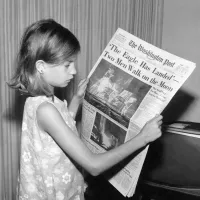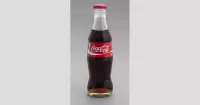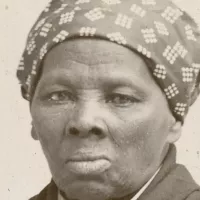The Minneapolis Police Department (MPD) is the largest police department in Minnesota and the second oldest, established in 1867. It serves as the primary law enforcement agency for the city of Minneapolis. A previous iteration, the Board of Police Commissioners, existed briefly from 1887 to 1890.
1906: Line of Duty Deaths
Between 1906 to 2009, the MPD experienced a period where line-of-duty deaths among its officers occurred at a rate of one every seven years or more.
1909: Technological Advancements in the MPD
In 1909, the MPD adopted new technologies, including motorcycles, fingerprinting, and telephones.
1926: Allegations of Police Agreements with Criminal Gangs
In 1926, an FBI memo alleged an agreement between Minneapolis and St. Paul police and criminal gangs led by Dan Hogan and Edward Morgan. The memo suggested that gangs refrained from committing crimes in the Twin Cities in exchange for non-interference from law enforcement. This arrangement reportedly resulted in very few major crimes like bank robberies occurring in the area.
December 16, 1932: Third Northwestern Bank Robbery and Killing of Police Officers
On December 16, 1932, the infamous Barker-Karpis gang robbed the Third Northwestern Bank in downtown Northeast, Minneapolis. During their escape, the gang killed two responding police officers, Ira Leon Evans and Leo Gorski. The shocking incident and the gang's brazen escape triggered an intense manhunt, leading to the capture of some gang members but not the leaders who had fled. The incident also highlighted the financial struggles of the police department during the Great Depression, as it was revealed that the slain officers had been working without pay due to budget cuts.
May 1934: Minneapolis Teamsters Strike
The Minneapolis Teamsters Strike began in May 1934 when a new truckers union was not recognized. The strike involved violent clashes between teamsters and the MPD, assisted by the National Guard. The strike ended in August with union recognition.
1950: Minneapolis Reaches Peak Population
The 1950 Census recorded Minneapolis' peak population at over 521,000, with the MPD employing nearly 600 officers. The city was identified as 98% white.
1952: Establishment of the Police Reserve
Following World War II, a program where wardens were assigned to each city block for air raid drills was formalized into the Police Reserve. The Reserve, operating under the Minneapolis Police Department's Civil Defense unit, aimed to enhance police presence at major events.
1952: Introduction of the Drunkometer
The Drunkometer, a precursor to the intoxilyzer, was first used in Minneapolis in 1952.
1960: Neighborhood Revitalization Program Begins
The Neighborhood Revitalization Program was launched in 1960 with the aim of improving infrastructure and community relations in Minneapolis.
1969: Charles Stenvig Elected Mayor
Charles Stenvig, a Minneapolis policeman, was elected mayor and served for a total of six years between 1969 and 1978.
1970: Creation of Community Relations Division and Model Cities Precinct
The Community Relations Division and the Model Cities Precinct were established in 1970 in response to the Plymouth Avenue Riots and the MPD's inadequate response to the unrest.
1978: End of Charles Stenvig's Mayoral Terms
Charles Stenvig's final term as mayor of Minneapolis ended. He returned to his position as a policeman.
1981: Minneapolis Domestic Violence Experiment
Conducted in 1981, the Minneapolis Domestic Violence Experiment led to significant changes in police protocols for domestic violence calls, influencing departments in other cities.
1988: Changes to Authorized Firearms for MPD Officers
Prior to 1988, MPD officers could carry Colt or Smith & Wesson revolvers (.38 or .357 caliber). From 1988 to 2002, they were authorized to carry Beretta or Smith & Wesson semiautomatics (9mm or .45).
1989: Fatal Drug Raid on Lloyd Smalley and Lillian Weiss
In 1989, a flawed drug raid conducted by the Minneapolis Police Department resulted in the tragic deaths of an elderly couple, Lloyd Smalley and Lillian Weiss. Acting on inaccurate information from an informant, police raided the couple's home using flashbang grenades, which ignited a fire. The incident and subsequent lack of immediate rescue attempts raised serious concerns about police procedures, accountability, and the use of force.
1990: Population Decline and Rise in Drug Use and Gang Activity
By 1990, Minneapolis' population had declined to 368,383, but the demand for policing increased due to rising drug use and gang activity.
September 25, 1992: Murder of Officer Jerome Haaf
On September 25, 1992, Officer Jerome (Jerry) Haaf was fatally shot while on a break at a restaurant in Phillips. Two Vice Lord gang members were responsible for the shooting, which also wounded the investigator who was with Haaf. The incident occurred during a period of heightened tension between gangs and the Minneapolis Police Department, following the acquittal of officers in the Rodney King beating trial in Los Angeles. While Chief John Laux suggested the murder might have been in retaliation for an earlier incident involving Metro Transit Police, the incident amplified concerns about police brutality and insensitivity within the community.
1994: Mayor Acknowledges Excessive Force as a Problem
In 1994, Mayor Sharon Sayles Belton, herself an African-American, publicly acknowledged that excessive force was a problem within the Minneapolis Police Department. This statement came amidst ongoing concerns and criticisms regarding police brutality and strained relations between law enforcement and communities of color.
1995: Murderapolis and the Implementation of CODEFOR
In 1995, Minneapolis experienced a peak in homicides, leading to the city being dubbed "Murderapolis" by a local gun shop owner. In response to the high crime rates, the Minneapolis Police Department adopted the "Fixing Broken Windows" crime-prevention strategy. They sent officers to New York City to study the program and, upon their return, implemented a new policing strategy known as CODEFOR (Computer Optimized DEployment - Focus On Results). This computer-based system aimed to identify and concentrate policing efforts on crime hot spots using statistical and data-based information.
1998: Highway 55 Rerouting and Protests
The re-routing of Minnesota State Highway 55 in 1998 led to protests from the Hiawatha neighborhood in the Longfellow community and members of the Mendota Mdewakanton community. The situation prompted the need for police protection for construction workers.
July 2000: Clash with Protesters at International Society of Animal Genetics Conference
In July 2000, a clash occurred between Minneapolis police and protesters at an International Society of Animal Genetics conference. A subsequent raid on a non-profit office thought to be involved in organizing the protest sparked City Council inquiries. Chief Olson disclosed the presence of forty undercover police officers among the demonstrators and the deployment of 400 to 500 Minneapolis police officers for the week-long conference.
2000: Disproportionate Police Force Against Black People
From 2000 to 2021, Minneapolis police records showed a significant racial disparity in the use of force by the Minneapolis Police Department. Black people, comprising 19% of the population, were subjected to 58% of recorded police force incidents, indicating a disproportionate targeting of Black individuals by law enforcement during this period.
September 11, 2001: Minneapolis Police Reserve Role Reaffirmed
After the attacks of September 11, 2001, the role of the Minneapolis Police Reserve was reaffirmed, and the unit was placed under the Minneapolis Police Department's Emergency Preparedness Coordinator.
2001: Racial Profiling Concerns and Data Collection Efforts
In 2001, racial profiling emerged as a major concern in Minneapolis, prompting attempts by the state legislature to mandate the collection of racial data during traffic stops to identify profiling patterns. Although the measure faced resistance and was ultimately defeated, it led to incentivized pilot projects for departments to voluntarily collect such data, signifying growing awareness and initial steps towards addressing racial disparities in policing.
2002: Changes to Authorized Firearms for MPD Officers
In 2002, the .40 caliber firearm was authorized for use by the MPD.
2002: Accusations Against Chief Olson and Stalled Mediation
In 2002, then-Chief Robert Olson faced accusations of obstructing federal mediation efforts between the Minneapolis Police Department and civil rights groups in North Minneapolis. These accusations contributed to growing dissatisfaction with Olson's leadership within the community and the city government.
2003: Appointment of Chief William McManus
Following the ousting of Chief Robert Olson, William McManus, former chief of Dayton, Ohio, and former assistant chief in Washington, D.C., was appointed as the new chief of the Minneapolis Police Department in 2003. McManus's appointment aimed to address concerns about racial disparities and improve community relations. He focused on enhancing internal promotions for minority officers, overhauling the Internal Affairs department, and increasing accountability within the police force.
2003: Racial Profiling Concerns and Data Collection Efforts
In 2003, following concerns and initiatives addressing racial profiling in policing, the Minneapolis Police Department released a report acknowledging a higher likelihood of stopping non-white individuals. This revelation prompted Mayor R.T. Rybak to commission an audit of the MPD, aiming to understand the root causes behind this disparity and develop strategies to mitigate racial bias in law enforcement practices.
2004: Racial Disparities in Marijuana Possession Arrests
Between 2004 and 2012, the American Civil Liberties Union (ACLU) of Minnesota revealed alarming racial disparities in marijuana possession arrests by the Minneapolis Police Department. The report revealed that Black individuals were arrested at significantly higher rates than their white counterparts for marijuana possession, indicating a pattern of racially biased enforcement practices by the MPD.
2005: Beginning of Crime Decline
In line with national trends, crime rates in Minneapolis began to decline significantly in 2005.
2006: Police Misconduct Payouts and Lack of Accountability
Between 2006 and 2012, the city of Minneapolis paid out $14 million in settlements related to alleged police misconduct, highlighting a pattern of costly consequences for police wrongdoing.
2006: MPD Officer Rifle Policy Changes
Between 2006 and 2015, MPD officers could buy their rifle (Smith & Wesson M&P 15X) and carry it on patrol.
2006: Changes to Authorized Firearms for MPD Officers
In 2006, MPD officers were authorized to carry Beretta, Smith & Wesson, H&K, or Sig Sauer in 9mm, .40, or .45 caliber (DA/SA only).
2006: Resignation of Chief McManus
In early 2006, facing uncertainty over his reconfirmation for a second term, Chief William McManus resigned from his position to accept the police chief role in San Antonio, Texas. Despite his efforts to address racial disparities and improve community relations, McManus faced internal resistance and political challenges during his tenure.
August 1, 2007: I-35W Mississippi River Bridge Collapse
On August 1, 2007, the I-35W Mississippi River bridge collapsed in Minneapolis. The Minneapolis Police Department played a crucial role in the immediate aftermath of the disaster, providing safety and security, managing traffic, and coordinating with other agencies. The department's efficient response, aided by post-9/11 disaster training, was widely praised.
December 2007: Racial Discrimination Lawsuit
In December 2007, five high-ranking Black police officers filed a lawsuit against the Minneapolis Police Department, alleging a persistent pattern of systemic racial discrimination and a hostile work environment for Black officers. The lawsuit highlighted ongoing concerns about racism within the department despite efforts to address diversity and inclusion.
2007: Implementation of Neighborhood Policing Plans
In 2007, after a decade of data collection through the CODEFOR program, the MPD implemented neighborhood policing plans based on identified crime trends.
2008: Recognition for Emergency Response
In 2008, the Minneapolis Emergency Communications Center (9-1-1 center) received recognition for its exceptional handling of the I-35W Mississippi River bridge collapse. Their efficient coordination and communication were instrumental in the emergency response efforts.
April 2009: Settlement of Racial Discrimination Lawsuit
In April 2009, the city of Minneapolis reached a $740,000 settlement with the five Black police officers who had filed a lawsuit alleging racial discrimination within the police department. The settlement brought a partial resolution to the lawsuit, but it also underscored the persistence of racial disparities and the need for further reforms within the department.
2009: Line of Duty Deaths
Between 1906 to 2009, the MPD experienced a period where line-of-duty deaths among its officers occurred at a rate of one every seven years or more.
2010: Powell Involved in Lawsuit for Beating
In 2010, Shawn Powell and other officers were involved in a lawsuit for severely beating an African American man. The City of Minneapolis settled the suit by paying the victim $235,000.
2010: Flashbang Grenade Injury of Rickia Russell
In 2010, a Minneapolis Police Department raid on Rickia Russell's apartment resulted in severe injuries when officers used a flashbang grenade. Despite not finding the sought-after contraband, the raid left Russell with third-degree burns and led to a $1 million settlement from the Minneapolis City Council. The incident sparked outrage and fueled concerns about excessive force and accountability within the police department.
2011: Significant Crime Reduction
By 2011, Minneapolis had experienced a substantial 42% reduction in crime rates from their levels in 2005, mirroring trends observed in other cities across the nation.
November 2012: Beating Incident Involving Off-Duty Officers
In November 2012, three off-duty Minneapolis officers were involved in the beating of an African American man in Apple Valley, Minnesota. The incident involved racial slurs and led to an internal investigation.
2012: Racial Disparities in Marijuana Possession Arrests
Between 2004 and 2012, the American Civil Liberties Union (ACLU) of Minnesota revealed alarming racial disparities in marijuana possession arrests by the Minneapolis Police Department. The report revealed that Black individuals were arrested at significantly higher rates than their white counterparts for marijuana possession, indicating a pattern of racially biased enforcement practices by the MPD.
2012: Police Misconduct Payouts and Lack of Accountability
Between 2006 and 2012, the city of Minneapolis paid out $14 million in settlements related to alleged police misconduct, highlighting a pattern of costly consequences for police wrongdoing.
2012: Racial Disparities in Incarceration and Police Violence
Between 2012 and 2014, Minneapolis faced alarming racial disparities in incarceration rates, with Black individuals incarcerated at nearly ten times the rate of white individuals. This period also witnessed a continuation of disproportionate police violence against Black communities.
2012: Racial Disparities in Low-Level Arrests
Between 2012 and 2014, Minneapolis police data revealed stark racial disparities in arrests for low-level offenses, with Black people accounting for 60% of such arrests despite constituting a smaller proportion of the city's population. This practice of disproportionately targeting Black individuals for minor offenses contributed to a cycle of arrests, incarceration, and subsequent socioeconomic disadvantages.
2012: Changes to Authorized Firearms for MPD Officers
From 2012 to 2015, MPD officers were only authorized to carry the Smith & Wesson M&P in 9mm or .45 caliber.
June 2013: Officers Plead Guilty to Disorderly Conduct
In June 2013, Minneapolis officers William C. Woodis and Christopher J. Bennett pled guilty to misdemeanor charges of disorderly conduct related to the beating of an African American man in November 2012. Charges against Andrew R. Allen were dropped.
December 2013: Internal Investigation Ongoing
By December 2013, an internal investigation into the November 2012 beating incident involving three Minneapolis officers was still ongoing.
December 2013: Officers Powell and Thole Fired
In December 2013, Shawn Powell and Brian Thole were fired from the Minneapolis Police Department following misconduct incidents, including a disturbance in Green Bay and previous lawsuits involving excessive force.
2013: Racial Disparities in Low-Level Arrests
An analysis of low-level arrests made by the Minneapolis Police Department between 2013 and 2014 exposed significant racial disparities and variations in arrest practices among officers. The data showed that Black citizens were arrested at disproportionately higher rates than white citizens for similar low-level violations. This pattern of racially biased enforcement practices raised serious concerns about fairness and equity within the city's police department.
2013: Off-duty Minneapolis Officers Fired After Green Bay Incident
In 2013, two off-duty Minneapolis officers, Shawn Powell and Brian Thole, were involved in a disturbance in Green Bay, Wisconsin. The incident included racist and homophobic remarks, and physical violence against black men. Both officers were subsequently fired for their actions.
2014: Racial Disparities in Incarceration and Police Violence
Between 2012 and 2014, Minneapolis faced alarming racial disparities in incarceration rates, with Black individuals incarcerated at nearly ten times the rate of white individuals. This period also witnessed a continuation of disproportionate police violence against Black communities.
2014: Racial Disparities in Low-Level Arrests
Between 2012 and 2014, Minneapolis police data revealed stark racial disparities in arrests for low-level offenses, with Black people accounting for 60% of such arrests despite constituting a smaller proportion of the city's population. This practice of disproportionately targeting Black individuals for minor offenses contributed to a cycle of arrests, incarceration, and subsequent socioeconomic disadvantages.
November 2015: Black Lives Matter Demands Change in Grand Jury Process
In November 2015, Black Lives Matter demanded that Hennepin County prosecutor bypass the traditional Grand Jury process for police shooting cases, arguing it rarely leads to prosecutions.
November 2015: Shooting of Jamar Clark and Protests
The fatal shooting of Jamar Clark by Minneapolis police in November 2015 sparked widespread protests and reignited tensions between law enforcement and the community, particularly in north Minneapolis. Demonstrations calling for justice for Clark and the release of video footage of the incident took place at the Minneapolis Police Department's Fourth Precinct and throughout the city. Online activism, including a petition by Color of Change that garnered 70,000 signatures, amplified the calls for accountability and transparency from the police department.
November 16, 2015: Shooting of Jamar Clark
On November 16, 2015, Jamar Clark was shot by Minneapolis police officers during a domestic violence call. Conflicting accounts led to a DOJ investigation, which later confirmed the officers’ account.
2015: Disproportionate Police Force Against Black People
From 2000 to 2021, Minneapolis police records showed a significant racial disparity in the use of force by the Minneapolis Police Department. Out of 149 Minnesotans killed by police between 2000 and 2015, 67 were "people of color", underscoring the disproportionate impact of police violence on minority communities. Black people, comprising 19% of the population, were subjected to 58% of recorded police force incidents, indicating a disproportionate targeting of Black individuals by law enforcement during this period.
2015: Changes to Authorized Firearms for MPD Officers
From 2015 to the present, MPD officers have been authorized to carry a Smith & Wesson M&P, SIG Sauer P320, or Glock in 9mm or .40 caliber.
2015: Discovery of Untested Rape Kits
In 2015, 194 untested rape kits were discovered by the Minneapolis Police Department, highlighting a significant backlog and prompting criticism.
2015: Officer Rod Webber's Threats and Allegations of Racism
In 2015, Minneapolis police officer Rod Webber was fired after threatening a Black teenager, Hamza Jeylani, and boasting about his willingness to use excessive force. The incident, captured on Jeylani's phone, exposed Webber's abuse of power and racial bias. Webber's subsequent firing and the allegations of racism against him further eroded public trust in the Minneapolis Police Department.
2015: Racial Disparities in Incarceration and Police Violence
In 2015, stark racial disparities persisted within the Minnesota justice system. Black youth from Hennepin County represented 50% of all incarcerated youth statewide, while Black adults constituted 35% of the state's adult inmate population, with 25% originating from Hennepin County. These figures highlighted the systemic overrepresentation of Black individuals within the criminal justice system.
2015: MPD Officer Rifle Policy Changes
In 2015, the city discontinued the program that let MPD officers buy and carry their own rifles. Instead, they opted for specifically chosen and trained patrol rifle officers to carry rifles on patrol.
2015: Difficulties in Filing Misconduct Complaints
Notably, the Department's 4th Precinct, under scrutiny after the 2015 police shooting of Jamar Clark, was identified as the most receptive to complaints.
February 2016: NAACP and ACLU Sue DOJ
In February 2016, the NAACP and ACLU sued the Department of Justice to release videotapes related to an ongoing investigation, arguing for transparency.
March 16, 2016: Prosecutor Announces Changes to Grand Jury Process
On March 16, 2016, influenced by Black Lives Matter protests, Hennepin County prosecutor Freeman announced changes to the Grand Jury process, citing transparency concerns. He also decided to stop using Grand Juries in police-involved shootings.
March 30, 2016: Prosecutor Declines to Charge Officers
On March 30, 2016, Freeman announced that he would not charge the officers involved in a police shooting, stating they acted within legal boundaries. This decision followed his earlier commitment to bypass the Grand Jury process.
May 2016: Assault Incident Involving Reiter
In May 2016, former officer Christopher Reiter assaulted Mohamed Osman by kicking him in the head during an arrest. The incident was caught on tape.
2016: Limited Progress and Regression in Police Reform
Despite ongoing efforts and commitments to police reform in Minneapolis, tangible improvements by 2016 were considered limited, with some observers perceiving a regression in progress. This assessment underscores the challenges and complexities of achieving meaningful and sustainable change in policing practices, particularly concerning racial disparities and community trust.
2016: Difficulties in Filing Misconduct Complaints
In 2016, a study revealed significant obstacles in filing misconduct complaints against the Minneapolis Police Department. The research highlighted the department's complex and often obstructive processes for reporting misconduct, raising concerns about accountability and transparency within the MPD. This lack of accessibility to complaint mechanisms hindered public oversight and potentially allowed misconduct to go unaddressed.
2016: Racial Demographics of Minneapolis Police Department
In 2016, the racial makeup of the Minneapolis Police Department was 76.9% White, 8.56% Black, 5.47% Asian, 4.4% Hispanic, and 4.6% other races.
July 15, 2017: Justine Damond Shot and Killed
On July 15, 2017, Justine Damond, an Australian-American woman, was shot and killed by Minneapolis police officer Mohamed Noor after she called 911 to report a possible rape.
October 10, 2017: Christopher Reiter Convicted
On October 10, 2017, former Minneapolis officer Christopher Reiter was convicted of third-degree aggravated assault for kicking Mohamed Osman in the head during a May 2016 arrest.
December 12, 2017: Reiter Sentenced
On December 12, 2017, Christopher Reiter was sentenced to six months in a workhouse prison and three years probation for his assault conviction. He was also stripped of his peace officer license.
April 2019: Noor Convicted
In April 2019, Mohamed Noor was convicted of third-degree murder and second-degree manslaughter for the shooting of Justine Damond.
June 7, 2019: Noor Sentenced
On June 7, 2019, Mohamed Noor was sentenced to 12.5 years in prison for the third-degree murder and second-degree manslaughter of Justine Damond.
June 13, 2019: Clark’s Family Lawsuit Update
On June 13, 2019, Officer Schwarze was removed as a plaintiff in a civil lawsuit filed by Jamar Clark’s family.
July 2019: Noor Filed Appeal
In July 2019, Mohamed Noor filed an appeal to overturn his convictions for the third-degree murder and second-degree manslaughter of Justine Damond.
August 2019: Settlement in Clark’s Family Lawsuit
In August 2019, the City of Minneapolis approved a $200,000 settlement with Jamar Clark’s family regarding his shooting by police.
2019: Comparison of Violent Crime Rates (2019 vs. 2020)
In 2019, Minneapolis recorded 269 shootings and 48 murders. This data point serves as a baseline for comparison with the surge in violent crime observed in 2020 following George Floyd's murder.
2019: Additional Untested Rape Kits Found
In 2019, approximately 1,700 additional untested rape kits were discovered, leading to further scrutiny of the Minneapolis Police Department's handling of evidence.
May 2020: Murder of George Floyd and Subsequent Protests
In May 2020, MPD officer Derek Chauvin murdered George Floyd, sparking global protests against police brutality and racism.
May 26, 2020: George Floyd's Murder
On May 26, 2020, the Minneapolis Police Department received widespread attention after a video showed officer Derek Chauvin kneeling on George Floyd’s neck, leading to Floyd’s death. The incident prompted investigations and global protests.
May 29, 2020: Destruction of the MPD's 3rd Precinct Station
On May 29, 2020, the Minneapolis Police Department's 3rd precinct station was destroyed.
June 8, 2020: Court Approves Minneapolis Police Reform Measures
On June 8, 2020, a Hennepin County Court judge approved six reform measures for the Minneapolis Police Department. These preliminary measures were part of a civil rights investigation initiated by the Minnesota Department of Human Rights.
June 10, 2020: Police Chief Announces Contract Negotiation Changes
On June 10, 2020, Minneapolis Police Chief Medaria Arradondo canceled future contract negotiations with the police union. He aimed to restructure existing contracts with the help of outside experts to improve transparency and accountability within the department.
June 2020: Calls to Dismantle the MPD
In June 2020, following the murder of George Floyd, Minneapolis City Council President Lisa Bender called for the dismantling of the MPD. Plans to disband the department were announced, but were met with opposition from Mayor Jacob Frey and were ultimately prevented by the city charter.
June 26, 2020: City Council Approves Proposal to Replace Police Department
On June 26, 2020, the Minneapolis City Council approved a proposal to replace the Minneapolis Police Department with a Department of Community Safety and Violence Prevention. The amendment aimed to shift focus from traditional law enforcement to a more community-oriented approach.
July 21, 2020: Minnesota Legislature Passes Major Police Reform Bill
On July 21, 2020, the Minnesota state legislature passed a comprehensive police reform bill. The legislation banned chokeholds, eliminated the controversial "warrior training" program, and mandated de-escalation and mental health crisis training for officers.
August 5, 2020: Charter Commission Delays Vote on Police Department Replacement
On August 5, 2020, the Minneapolis Charter Commission voted to delay putting the proposed police department replacement amendment on the November 2020 ballot. The decision aimed to allow for further review and address concerns about the amendment being rushed.
August 26, 2020: Riot Erupts Following False Rumors of Homicide Suspect's Suicide
On August 26, 2020, false rumors about a homicide suspect's suicide, later revealed to be a suicide, sparked a riot in Minneapolis. The incident, fueled by heightened tensions and mistrust of police following George Floyd's murder, resulted in looting, vandalism, and injuries to two police officers.
November 2020: Proposed City Charter Amendment to Replace MPD Cancelled
The Minneapolis City Charter Commission cancelled plans to put a proposed amendment on the November 2020 ballot to replace the MPD. This decision followed a rise in city crime.
November 2020: Charter Amendment Vote Delayed
The vote on the proposed Minneapolis charter amendment to replace the police department was delayed until after November 2020, following the Charter Commission's decision to extend its review.
December 2020: Officer Rod Webber's Threats and Allegations of Racism
By December 2020, former Minneapolis police officer Rod Webber remained dismissed from the department following a new investigation into allegations of racist remarks. Webber had been fired previously for threatening a Black teenager in 2015. The allegations against him, including reportedly expressing pride in the killing of Somalis during the "Black Hawk Down" incident and targeting Somali teenagers in traffic stops, pointed to deeply rooted racism within the police force.
2020: Racial Disparities in Incarceration and Police Violence
From 2015 to 2020, the Minneapolis Police Department's own reports revealed a concerning trend of racial disparity in the use of violence. Officers used violence against Black individuals at approximately seven times the rate compared to white individuals, further underscoring the systemic bias and disproportionate targeting of Black communities by law enforcement.
2020: Darnella Frazier Records George Floyd's Murder
In 2020, Darnella Frazier, a 17-year-old witness, recorded the assault and murder of George Floyd, contradicting the police's initial statement. This act of courage earned her the 2020 PEN/Benenson Courage Award and a Pulitzer Prize special citation in 2021.
2020: Police Misconduct Payouts and Lack of Accountability
In 2020, a KSTP-TV News investigation uncovered that Minneapolis had paid millions of dollars in settlements stemming from officers lying about use-of-force incidents. The investigation also revealed a systemic lack of accountability within the police department, as officers were rarely disciplined for dishonesty.
2020: Police Officers Federation of Minneapolis Leadership
In 2020, the Police Officers Federation of Minneapolis was led by Lieutenant Bob Kroll.
2020: Surge in Shootings and Murders Following George Floyd's Murder
In the aftermath of George Floyd's murder in May 2020, Minneapolis experienced a significant surge in violent crime. In less than 50 days, there were over 100 shootings, compared to 269 in all of 2019. The city also recorded 32 murders by that point, compared to 48 in all of 2019.
April 20, 2021: Chauvin Convicted
On April 20, 2021, Derek Chauvin was convicted of unintentional second-degree murder, third-degree murder, and second-degree manslaughter for the death of George Floyd.
July 1, 2021: Judge Orders MPD to Increase Staffing
On July 1, 2021, a Minneapolis judge ruled that the MPD must hire more officers to meet the minimum number required by the City Charter, citing rising crime rates.
July 2021: Court Orders Minneapolis Police to Hire More Officers
In July 2021, a Hennepin County judge ruled that Minneapolis must hire more police officers to comply with the city's charter. The ruling criticized the City Council and Mayor's office for failing to adequately fund and staff the police department.
August 10, 2021: Supreme Court Upholds Ruling on Police Hiring
On August 10, 2021, the Minnesota Supreme Court rejected Minneapolis's attempt to overturn a lower court's ruling that required the city to hire more police officers. The ruling aimed to address staffing shortages within the police department.
September 15, 2021: Noor’s Conviction Overturned
On September 15, 2021, the Minnesota Supreme Court overturned Mohamed Noor’s conviction for third-degree murder in the killing of Justine Damond.
October 2021: Noor's Sentence Revised
In October 2021, Mohamed Noor's sentence was revised to 4.75 years in prison after the Minnesota Supreme Court overturned his third-degree murder conviction.
November 2021: Defeat of Measure to Replace MPD
A similar measure to the one proposed in 2020, aiming to replace the MPD, was put on the November 2021 ballot but was defeated.
November 2021: Voters Reject Charter Amendment to Replace Police Department
In the November 2021 election, Minneapolis voters rejected a charter amendment that would have replaced the Minneapolis Police Department with a Department of Public Safety. The proposal, which aimed to significantly restructure law enforcement in the city, failed to gain enough support.
2021: Lawsuit Highlights Lack of Police Presence in North Minneapolis
A 2021 lawsuit pointed out the insufficient police presence in North Minneapolis neighborhoods, attributing it to a rise in violent crime.
2021: Disproportionate Police Force Against Black People
From 2000 to 2021, Minneapolis police records showed a significant racial disparity in the use of force by the Minneapolis Police Department. By 2021, data revealed that MPD stopped Black drivers for minor traffic violations at nine times the rate of white drivers, and searched them 29 times more often. Black people, comprising 19% of the population, were subjected to 58% of recorded police force incidents, indicating a disproportionate targeting of Black individuals by law enforcement during this period.
2021: Darnella Frazier Receives Pulitzer Prize Citation
In 2021, Darnella Frazier was awarded a special citation from the Pulitzer Prize committee for her courageous act of recording George Floyd's murder.
2021: Police Officers Federation of Minneapolis Leadership
In 2021, Sherrel Schmidt replaced Bob Kroll as head of the Police Officers Federation of Minneapolis.
2021: Continued Racial Disparities in Traffic Stops and Searches
In 2021, data analysis showed that the Minneapolis Police Department continued to exhibit racial disparities in traffic stops and searches. Black drivers were stopped for minor traffic violations at a rate nine times higher than that of white drivers, and they were subjected to searches 29 times more frequently than their white counterparts. These findings highlighted the persistent issue of racial profiling within the MPD, despite previous efforts to address the problem.
April 27, 2022: Minnesota Department of Human Rights Investigation
On April 27, 2022, the Minnesota Department of Human Rights released the findings of its investigation into the Minneapolis Police Department and city leadership. The report concluded that racial bias was prevalent in various police-citizen interactions, further substantiating longstanding concerns about systemic racism within the MPD. This investigation and its findings marked a pivotal moment in the ongoing struggle for police reform and racial justice in Minneapolis.
June 16, 2023: DOJ Report Finds MPD Engages in Pattern of Unconstitutional Conduct
On June 16, 2023, a US Department of Justice report revealed that the MPD engages in a pattern of unconstitutional and unlawful conduct, including excessive force, racial discrimination, and free speech violations.
2024: Death of Officer Jamal Mitchell
In 2024, the Minneapolis Police Department experienced a tragic loss when Officer Jamal Mitchell was fatally shot while responding to a shooting incident. This incident marked the most recent line-of-duty death for the department, highlighting the inherent dangers and risks associated with law enforcement work.
Mentioned in this timeline

Washington D C is the capital city and federal district...

An apple is a widely cultivated edible fruit originating in...

Dayton is a city in Ohio serving as the county...

Los Angeles is the most populous city in California and...

News encompasses information about current events disseminated through various media...

Glock is a brand of semi-automatic pistols manufactured by Glock...
Trending

1 month ago Saints WR Shaheed Trade Rumors Swirl Amid Olave Interest Before NFL Deadline.

6 months ago Trump's White House Rose Garden Paving Sparks Controversy After Melania's Redesign; Bulldozing Begins.
4 months ago Jack Bech Impresses at Raiders Training Camp, Showcasing Skill Set and Potential Impact.

7 months ago Warren Buffett, 94, Defends Coca-Cola Love and Exercise-Free Lifestyle with McDonald's
9 days ago Monangai vs. Swift: Bears' Backfield and Updated Fantasy Football Outlook for Week 12/13.
9 days ago Luther Burden III, Cole Kmet, and A.J. Brown NFL tickets available for purchase.
Popular
Matt and Ross Duffer known as the Duffer Brothers are...
Aftyn Alyssa Behn is an American politician currently serving as...

Candace Owens is an American conservative political commentator and author...

XXXTentacion born Jahseh Dwayne Ricardo Onfroy was a controversial yet...

Ilhan Omar is an American politician currently serving as the...

Harriet Tubman was a pivotal American abolitionist and social activist...